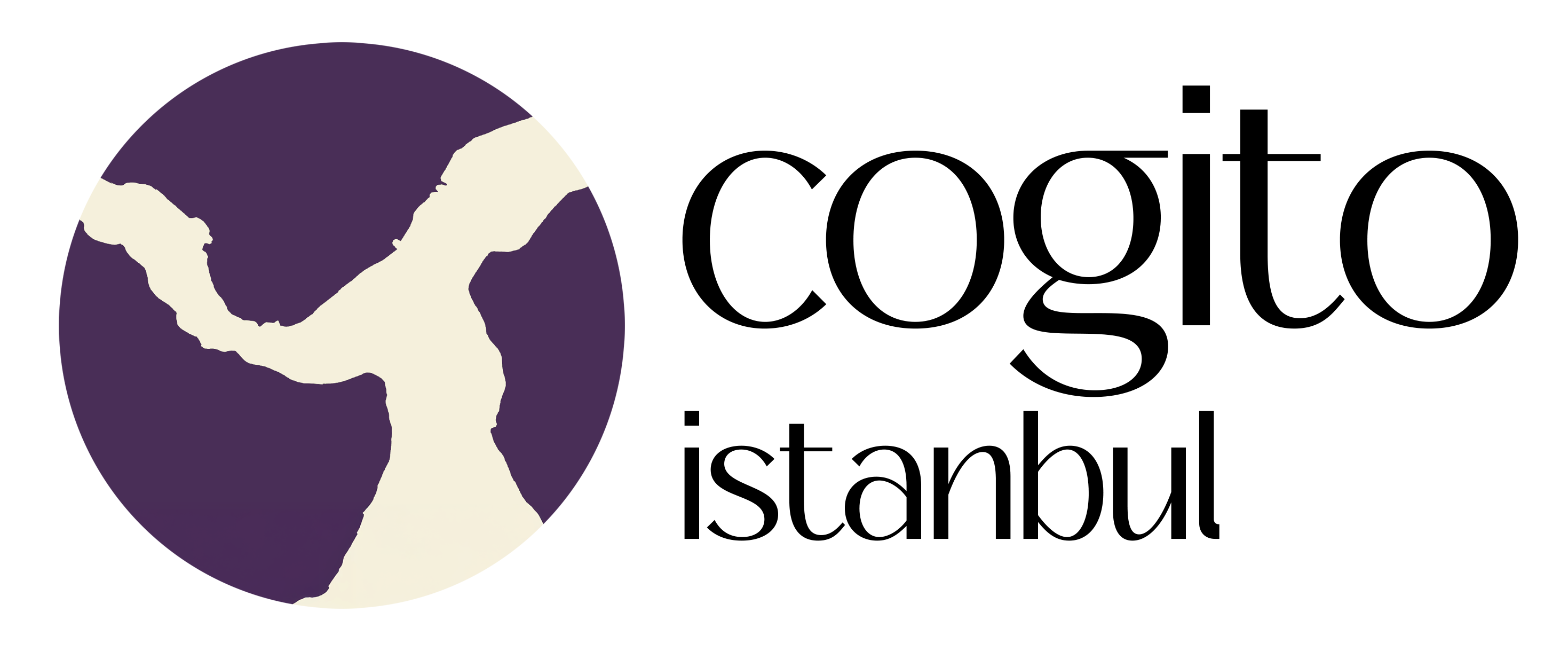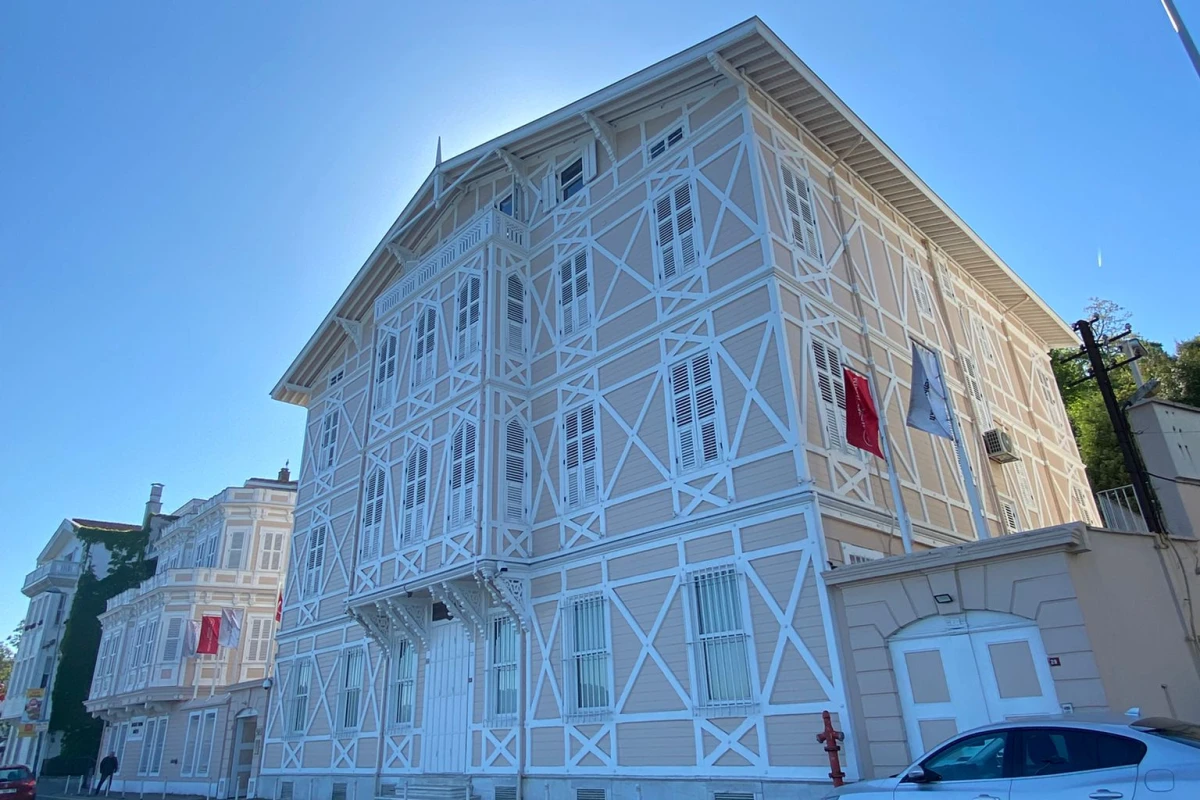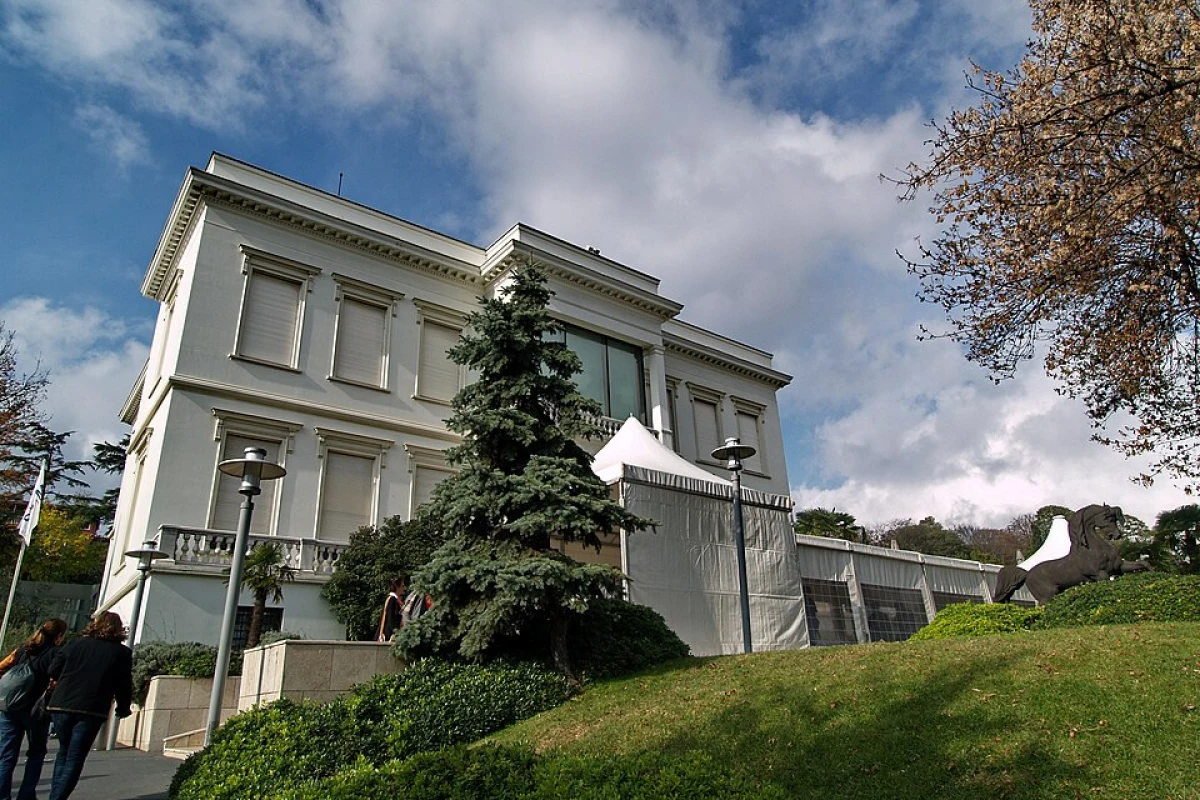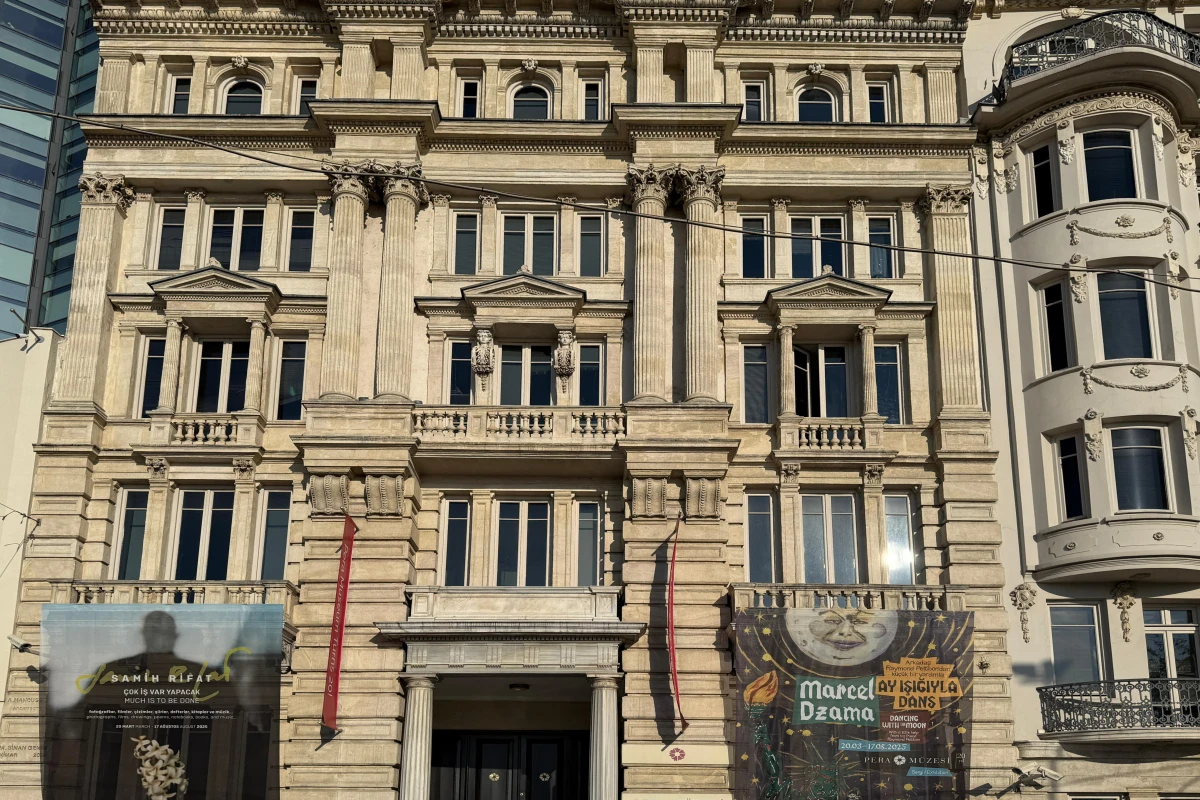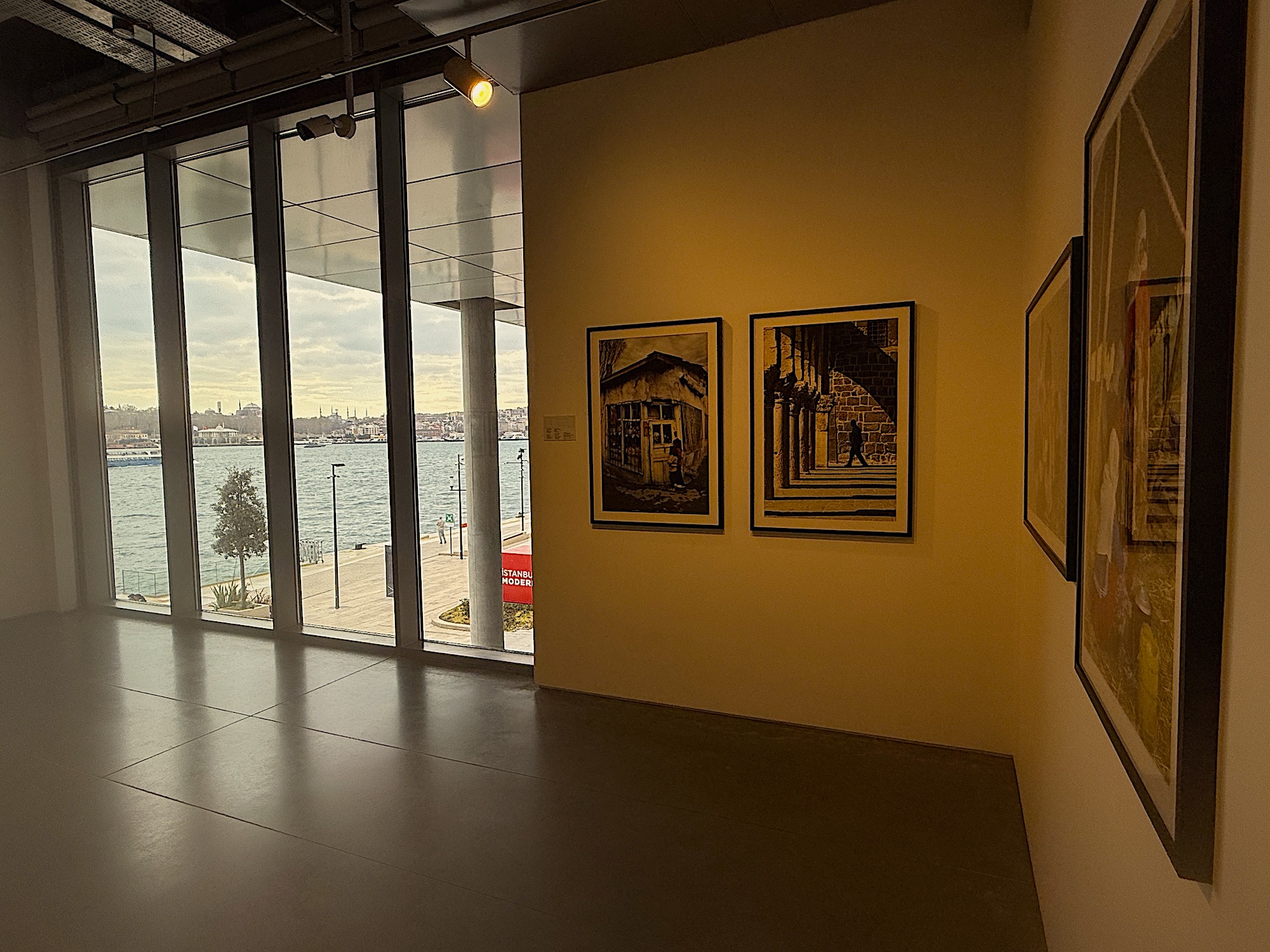Istanbul Museum of Painting and Sculpture
Discover the evolution of Turkish art in the heart of modern Istanbul.
A Living Gallery of National Identity
Just steps from the Bosphorus and nestled in the revitalized Tophane neighborhood, the Istanbul Museum of Painting and Sculpture (İstanbul Resim ve Heykel Müzesi) offers a stunning journey through Turkish visual culture. With over 12,000 works spanning late Ottoman, early Republican, and contemporary periods, this is Turkey’s premier destination for lovers of art, history, and cultural identity.
Originally founded in 1937 by order of Mustafa Kemal Atatürk, the museum was Turkey’s first institution dedicated solely to plastic arts. After decades at Dolmabahçe Palace, it moved to its new home in 2022—a brilliantly renovated modernist warehouse designed by Emre Arolat. Here, the past and present of Turkish art are displayed under one luminous roof. Discover the paintings of Osman Hamdi Bey to get prepared for the exhibition at the Museé d'Orsay in 2026!
What You’ll Discover Inside the Istanbul Museum of Painting and Sculpture
Foundational Masters and the Ottoman Legacy
The museum’s earliest rooms feature the works of Osman Hamdi Bey, Şeker Ahmet Paşa, and other pioneering artists who brought Western techniques into the Ottoman court. These works capture not just artistic mastery but symbolic moments in Turkish intellectual life, including rare early pieces that trace the emergence of Western-style painting in the Ottoman Empire.
Many of these works emerged from military academies like Harbiye and Mekteb-i Tıbbiye, where art was taught to support map-making and architectural drafting. The collection known as Elvah-ı Nakşiye—comprising copied masterpieces inspired by the Louvre model—formed the nucleus of Turkey’s national art archive.
Don’t miss the expressive brushstrokes of İbrahim Çallı, whose generation (1914 Kuşağı) infused impressionism with Turkish life, or Sami Yetik’s rooftop cityscapes reminiscent of Paris, filtered through Istanbul’s light.
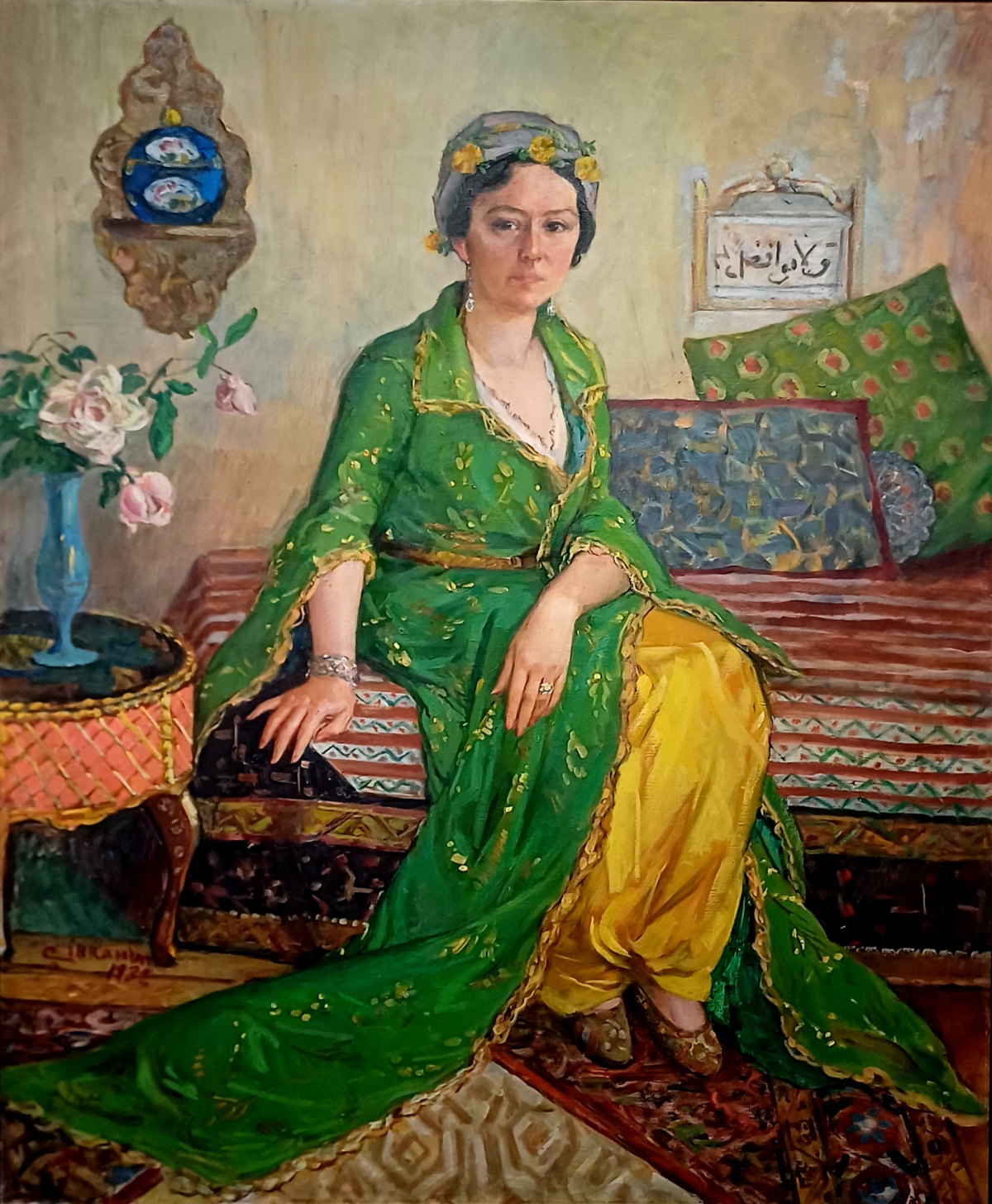
İbrahim Çallı, Woman in Green (Portrait of Mrs Vicdan Moralı), 1932
Women Artists and Republican Reforms
The museum honors the first generation of Turkish women artists educated at İnas Sanayi-i Nefise Mektebi, founded in 1914. Pioneers like Celile Hanım, Sabiha Rüştü Bozcalı, and Melek Celal Sofu broke social boundaries while contributing deeply to national artistic identity. A touching anecdote includes the winner of the Republic Monument sculpture contest—originally barred from traveling to Rome—who was later granted the opportunity thanks to Atatürk's intervention.
Impressionist Influences on Turkish Art
The influence of French Impressionism on Turkish painting became especially evident in the late 19th and early 20th centuries, as Ottoman artists studied in Paris and absorbed the plein-air techniques of the Barbizon and Fontainebleau schools. Artists like Şeker Ahmet Paşa introduced natural light, loose brushwork, and real landscapes into Turkish visual culture, moving away from heroic or mythological themes toward everyday scenes of nature. This shift laid the groundwork for a more introspective and localized style. Later, the 1914 Generation, including figures like İbrahim Çallı and Sami Yetik, expanded on this legacy by painting Istanbul rooftops and Turkish interiors with impressionist color palettes and dynamic perspectives. One of the finest examples of this synthesis is Nazmi Ziya Güran’s Limanda Sabah (Morning at the Port), a radiant portrayal of early morning light shimmering across Istanbul’s harbor. These painters did not merely imitate the West—they translated its techniques into a uniquely Ottoman-Turkish language, creating a modern visual identity rooted in both global and national aesthetics.
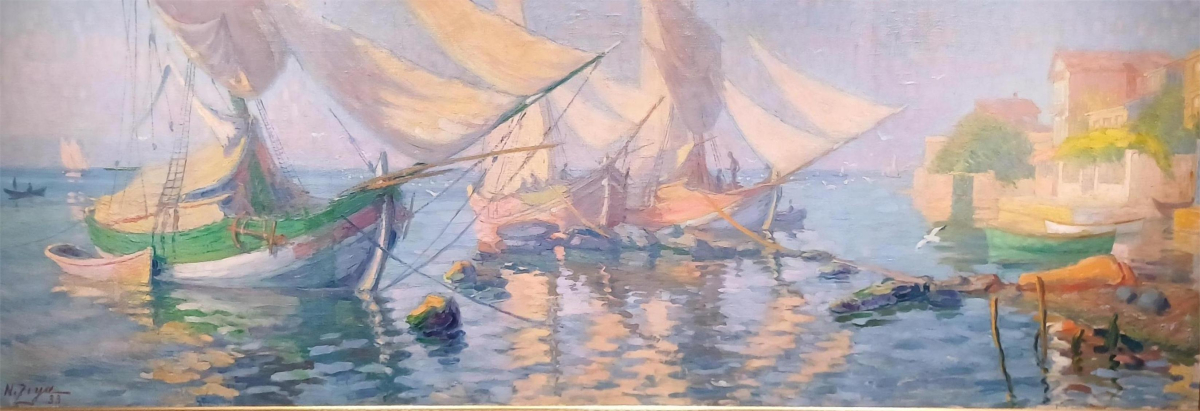
Nazmi Ziya Güran, Morning at the Port
Osman Hamdi Bey and Oriental Realism
Trained in Paris, Osman Hamdi Bey introduced a unique Orientalist lens, blending Ottoman themes with Western composition. His figures—especially women reading or admiring flowers—evade eroticism and present introspective dignity. His portraits, including The Girl with Mimosas, stand among the most intimate and skillful in Turkish art.
His vision extended to museology: he hoped to build a museum of art through replicas of Western masterpieces. Though not fully realized in his lifetime, this idea inspired the Elvah-ı Nakşiye collection.
A Museum Built on Revolution
In the wake of the Turkish War of Independence, Atatürk’s cultural vision was clear: a modern state required modern art. In 1937, he ordered the creation of the Museum of Painting and Sculpture—not in a palace or mosque, but in a repurposed wing of the Dolmabahçe Palace once reserved for the crown prince.
This decision symbolized a break from imperial pasts and an embrace of art as a public, civic duty. For decades, the museum stood as a quiet yet radical space—one where brushstrokes helped define a new identity. Its recent move to a renovated warehouse in Tophane continues this legacy, blending heritage with industrial minimalism and reasserting Istanbul as a global city of culture.
How to Visit the Istanbul Museum of Painting and Sculpture
📍 Location: Meclis-i Mebusan Caddesi No: 6, Tophane, Beyoğlu, Istanbul
🕒 Hours: Open Tuesday to Sunday, 10:00–18:00
❌ Closed on Mondays
🎟️ Tickets: Available on-site or via the museum’s official website
💡 Visit Tip: Don’t miss the upper floor’s panoramic views of the Bosphorus and the museum’s airy café—perfect for art-inspired reflection.
The Istanbul Museum of Painting and Sculpture is more than a gallery—it's a canvas of Turkey’s modern journey. From 19th-century Ottoman pioneers to today’s conceptual innovators, every room tells a story of reinvention, identity, and vision.
Whether you’re a lifelong art lover or curious traveler, this museum offers a moving, modern perspective on a nation that paints its future as boldly as its past
